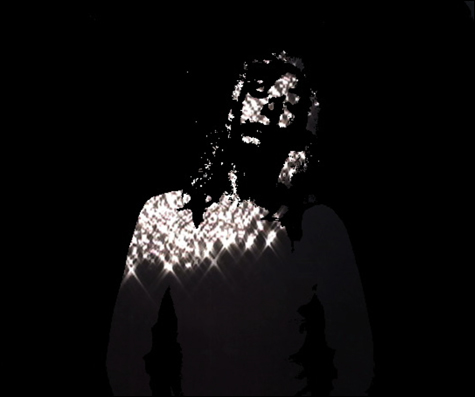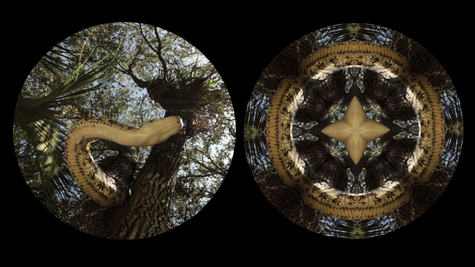
ENTRANCING Winkler's Glint. |
Enter music composer Todd Winkler's installation Glint and you find yourself in a small, dark room, surrounded on three sides by projected video of water, and installation art's requisite electronic drone soundtrack. A device senses your presence and inserts your outline into the shimmering waves, sometimes accented by silhouetted pilings and a setting sun. Sometimes you become a bunch of sketchy lines, sometimes you're a slightly contrasting patch of shimmering water as if you were wearing Predator camouflage.
Winkler is one of 24 Brown University teachers from five departments whom Brown curator Maya Allison rounds up in the "Faculty Triennial 2010" exhibit at the Bell Gallery (64 College Street, Providence, through February 13). It's the kind of show that gives you just a taste of what the staff is up to, with most artists limited to one or two works.
Winkler's piece is the most entrancing spectacle in the bunch. Leslie Thorton's Binocular One: Python shows side-by-side videos of a snake slithering in a tree. The footage on the left appears raw and unaltered, while the same footage on the right has been turned into a mesmerizing, discomforting kaleidoscopic mandala of undulating snake scale patterns. Paul Myoda offers two wall sculptures. Billowy Sconce is a Plexiglas lamp that beams out kaleidoscoping light and shadows onto a wall. Percussive Belle #1 has a hammer seemingly triggered by visitors' movement, causing the light and shadows it projects to wobble. As in Winkler's installation, there's much polish and panache here, but these artworks feel mainly like surface glitz that leave you craving something more. Like: Okay, I've been magically transformed into water; it looks cool, but now what?

MESMERIZING AND DISCOMFORTING Thornton's Binocular One: Python. |
Leigh Tarentino's watercolors of street signs, utility poles, and strip mall-style buildings look as if they're standing in floodwater, but their reflections are of different signs, poles, and buildings. The paintings draw us in with their visual oddity, but the traditional style gives the images a bit more grounding than the previous works.
Mark Tribe's The New Revolution features a large roll of "green screen paper" tacked across a wall, while a loop of the Who's "Won't Get Fooled Again" plays. Tribe, who founded the tech art blog Rhizome in 1996, attracted attention for his own artwork by staging reenactments over the past few years of landmark lefty political speeches of the 1960s. The recycled words seemed a response to the monster years of the Bush administration. But his works since, including a projection of documentary footage of police and protesters clashing and a room of locked file cabinets purporting to be documents about various activist groups at the DeCordova Museum's "Biennial" in Massachusetts last winter and his installation here, suggest that his real subject may be a post-modern focus on the media that delivers the message, rather than the message itself.
The New Revolution may be trying to say something about television trickery in the broadcasting of the news. But the point is muddled because green paper in a gallery doesn't necessarily call to mind the "green screen" backdrops of television studio special effects. And even if it does, how have they fooled us? And who has fooled us? It feels like too much telling via explanatory wall text and not enough showing via the art. And yet still too vague.